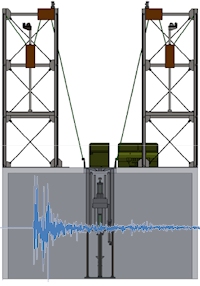Shock Testing's Roots Impact testing has been around for over a century, initially based on a pendulum type system developed for materials testing. The notion of “shock testing” came from the need to test the ruggedness of new products during the development phase. The first “classical” shock pulses were generated by dropping products onto various impact mediums (e.g. sand).
These early testing methods were challenged with repeatability and consistency issues and were generally a pass/fail type test.

Damage Boundary Theory developed in the late 1960’s formalized a shock testing methodology which is still the framework for the majority of shock testing fundamentals. Damage Boundary shock testing identifies critical acceleration and critical velocity change levels that cause damage. While the testing fundamentals remain much the same today, the approach and application of shock testing methodologies continue to evolve to meet the needs of rapidly advancing product development.
Current Testing Innovation One of the performance innovations being driven by new shock testing applications is increased speed. Higher impact velocity equals higher shock energy which is needed for specialized test requirements. Increased speed is not just about impact velocity, however. We are also developing shock systems with faster cycle rates to reduce the overall testing time for repetitive (fatigue) shock applications. Another major performance innovation is the ability to simulate complex events in real time, such as blast or crash effects to electronic systems and vehicle occupants. These complex events may have varying shock loads occurring both sequentially and simultaneously.
What the Future Holds

From our perspective, shock impacts generated to meet time domain parameters will always be the most common shock testing application. One future design innovation that we foresee will be developing complex waveform and multi-stage shock pulse programming to facilitate more frequency domain impact analysis.
Shock testing applications will continue to move away from rigid testing specifications that are not agile enough to keep up with quickly changing in-use environments. Rather, impact evaluations will be focused on more accurately replicating dynamics that are measured in the field. This will entail more developments, complex transient replication, multi-impact simulators, applications for multi-axis shock simulation and variable level repetitive impact simulation.